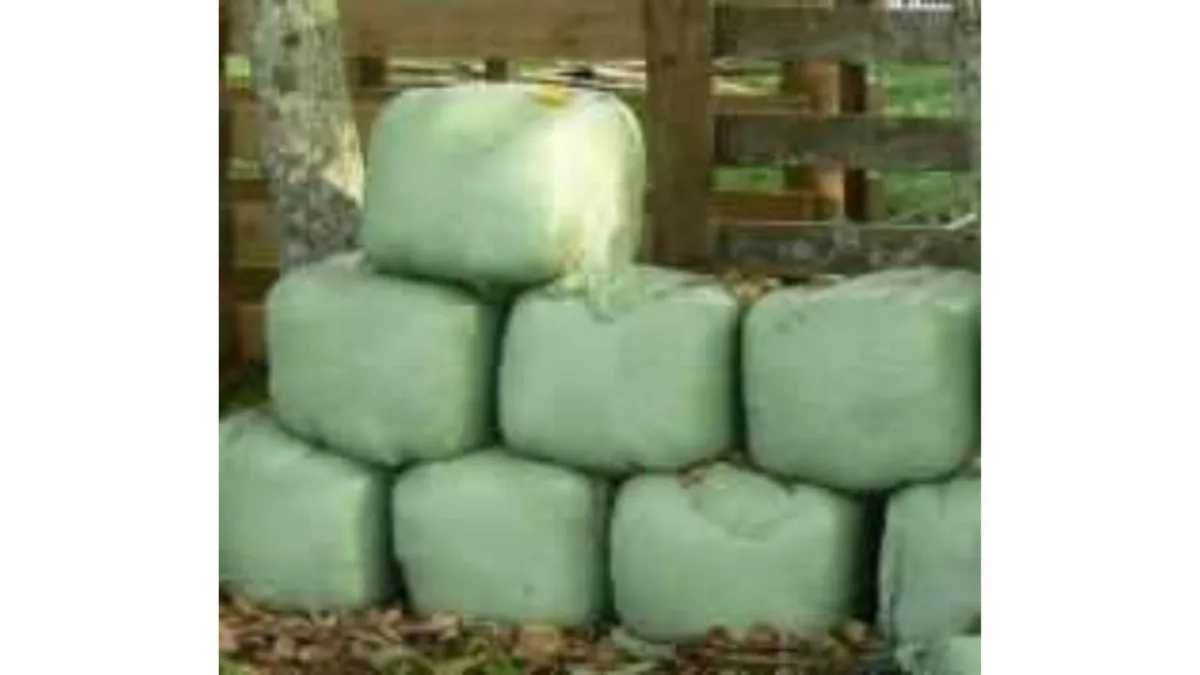
Supplementary feeding in winter
When pasture is short, livestock must be supplemented with other sources of feed to maintain health, body condition, and productivity. Hay is the most common substitute, but in many cases, additional feed such as concentrates, grain or silage may also be required, particularly in winter or during drought conditions.
How Much Hay Do Livestock Need
A simple rule of thumb is that most grazing animals require about 2 percent of their body weight in dry matter daily. For hay feeding, that works out to:
A 250 kg cattle beast or pony needs at least 5 kg of hay daily, or roughly a quarter of a small bale
A 500 kg horse will need around 10 kg per day, about half a bale of good-quality meadow hay
This is a baseline for maintenance only. Animals in poor condition, lactating, growing or pregnant will need more than the basic ration. If hay is poor quality, dusty or wasted underfoot, offer extra to ensure animals are eating enough.
Feeding Concentrates and Grain
Concentrates such as commercial pellets or grain mixes are valuable supplements when hay alone is not enough. They are particularly helpful for:
Young, fast-growing animals
Pregnant or lactating stock
Elderly animals with reduced digestive efficiency
Animals recovering from illness or underweight
Horses in regular work
These high-energy feeds supply protein, energy and other nutrients that may be lacking in dry forages alone. However, concentrates must be introduced carefully to avoid digestive upset.
Introducing New Feeds Safely
Whenever you introduce a new feed, whether it’s silage, grain, pellets or vegetable waste, it’s essential to do so gradually.
Start small, and increase amounts over one to three weeks
Feed in wide, spread-out lines to avoid competition and allow shy feeders to access food
Avoid offering large amounts suddenly, as this can cause bloat, rumen acidosis or choking
This process of slow introduction is called preconditioning, and it is especially important for feeds like:
Silage, which is acidic and can upset rumen pH if introduced too fast
Grain, due to its high carbohydrate content
Vegetable waste such as potatoes or apples, which may cause choking or digestive issues if overfed or fed too quickly
Some bulky feed types, such as corn stalks or vegetable trimmings, lack the nutritional density required for maintenance and should always be fed alongside hay or a formulated supplement.
Feeding Grain to Sheep
Grain is commonly used as a supplement for sheep, but it must be fed with care.
Offer 50 g per sheep per day for the first 10 days
Spread grain in long lines so all sheep can access it at once
Always feed grain alongside a roughage source such as hay, straw or pasture
Oats are generally safer than wheat, which requires longer preconditioning
Avoid feeding grain as the sole diet. It should always complement fibre-based feeds to keep the digestive system functioning well.
Water Must Always Be Available
When feeding dry feeds like hay, grain or concentrates, water becomes even more critical.
Ensure unrestricted access to clean water at all times
Check troughs or buckets daily in winter to prevent freezing or contamination
Animals fed high-fibre diets need plenty of water to keep digestion moving and reduce the risk of impaction or colic
Need help planning winter feeding or drought feed strategies
Our What You Need to Know Before You Keep Livestock courses cover species-specific feeding systems, supplements and seasonal care tailored for NZ lifestyle farmers.

